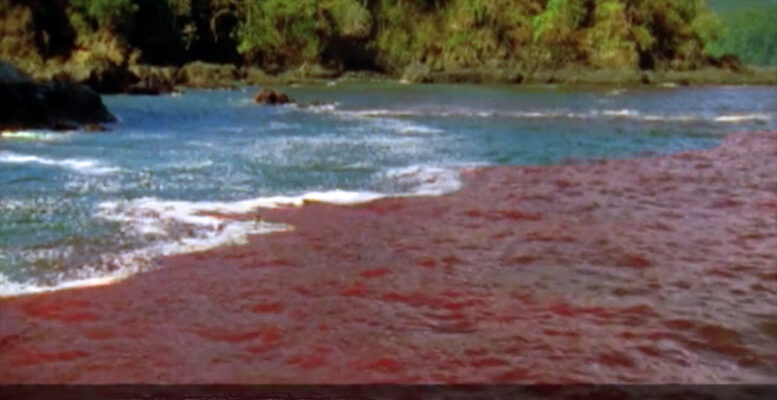Harmful algal blooms, or HABs, occur when colonies of algae—simple plants that live in the sea and freshwater—grow out of control while producing toxic or harmful effects on people, fish, shellfish, marine mammals, and birds. The human illnesses caused by HABs, though rare, can be debilitating or even fatal.
While many people call these blooms ‘red tides,’ scientists prefer the term harmful algal bloom. One of the best known HABs in the nation occurs nearly every summer along Florida’s Gulf Coast. This bloom, like many HABs, is caused by microscopic algae that produce toxins that kill fish and make shellfish dangerous to eat. The toxins may also make the surrounding air difficult to breathe. As the name suggests, the bloom of algae often turns the water red.
HABs have been reported in every U.S. coastal state, and their occurrence may be on the rise. HABs are a national concern because they affect not only the health of people and marine ecosystems, but also the ‘health’ of local and regional economies.
But not all algal blooms are harmful. Most blooms, in fact, are beneficial because the tiny plants are food for animals in the ocean. In fact, they are the major source of energy that fuels the ocean food web.
A small percentage of algae, however, produce powerful toxins that can kill fish, shellfish, mammals, and birds, and may directly or indirectly cause illness in people. HABs also include blooms of non-toxic species that have harmful effects on marine ecosystems. For example, when masses of algae die and decompose, the decaying process can deplete oxygen in the water, causing the water to become so low in oxygen that animals either leave the area or die.
Scientists at the National Ocean Service have been monitoring and studying this phenomenon for a number of years to determine how to detect and forecast the location of the blooms. The goal is to give communities advance warnings so they can adequately plan for and deal with the adverse environmental and health effects associated with these ‘red-tide’ events.
VIDEO: Learn about “red tides” and human health in this video from the U.S. Integrated Ocean Observing System®.
